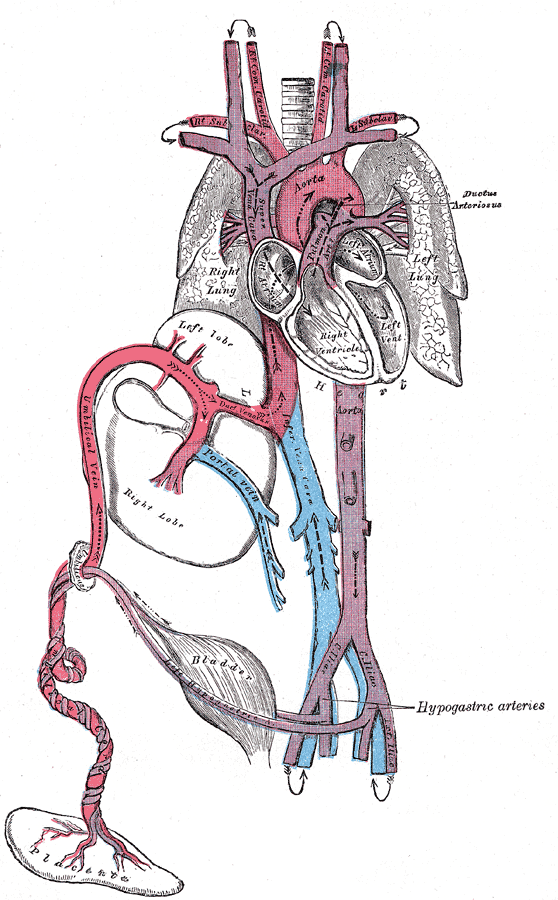[1]
Agrawal H, Waller BR 3rd, Surendan S, Sathanandam S. New Patent Ductus Arteriosus Closure Devices and Techniques. Interventional cardiology clinics. 2019 Jan:8(1):23-32. doi: 10.1016/j.iccl.2018.08.004. Epub
[PubMed PMID: 30449419]
[2]
Borràs-Novell C, Riverola A, Aldecoa-Bilbao V, Izquierdo M, Domingo M. Clinical outcomes after more conservative management of patent ductus arteriosus in preterm infants. Jornal de pediatria. 2020 Mar-Apr:96(2):177-183. doi: 10.1016/j.jped.2018.10.004. Epub 2018 Nov 10
[PubMed PMID: 30423323]
Level 2 (mid-level) evidence
[3]
Sathanandam S, Balduf K, Chilakala S, Washington K, Allen K, Knott-Craig C, Rush Waller B, Philip R. Role of Transcatheter patent ductus arteriosus closure in extremely low birth weight infants. Catheterization and cardiovascular interventions : official journal of the Society for Cardiac Angiography & Interventions. 2019 Jan 1:93(1):89-96. doi: 10.1002/ccd.27808. Epub 2018 Sep 30
[PubMed PMID: 30269408]
[4]
Waleh N, Barrette AM, Dagle JM, Momany A, Jin C, Hills NK, Shelton EL, Reese J, Clyman RI. Effects of Advancing Gestation and Non-Caucasian Race on Ductus Arteriosus Gene Expression. The Journal of pediatrics. 2015 Nov:167(5):1033-41.e2. doi: 10.1016/j.jpeds.2015.07.011. Epub 2015 Aug 8
[PubMed PMID: 26265282]
[5]
Villafañe J, Lantin-Hermoso MR, Bhatt AB, Tweddell JS, Geva T, Nathan M, Elliott MJ, Vetter VL, Paridon SM, Kochilas L, Jenkins KJ, Beekman RH 3rd, Wernovsky G, Towbin JA, American College of Cardiology’s Adult Congenital and Pediatric Cardiology Council. D-transposition of the great arteries: the current era of the arterial switch operation. Journal of the American College of Cardiology. 2014 Aug 5:64(5):498-511. doi: 10.1016/j.jacc.2014.06.1150. Epub
[PubMed PMID: 25082585]
[6]
van Wijk SW, Driessen MMP, Meijboom FJ, Takken T, Doevendans PA, Breur JM. Evaluation of Left Ventricular Function Long Term After Arterial Switch Operation for Transposition of the Great Arteries. Pediatric cardiology. 2019 Jan:40(1):188-193. doi: 10.1007/s00246-018-1977-6. Epub 2018 Sep 10
[PubMed PMID: 30203292]
[7]
Ashrafi AH, Levy VY. Management strategies for the preemie ductus. Current opinion in cardiology. 2019 Jan:34(1):41-45. doi: 10.1097/HCO.0000000000000580. Epub
[PubMed PMID: 30394907]
Level 3 (low-level) evidence
[8]
Choi GJ, Song J, Kim YS, Lee H, Huh J, Kang IS. Outcomes of transcatheter closure of ductus arteriosus in infants less than 6 months of age: a single-center experience. Korean journal of pediatrics. 2018 Dec:61(12):397-402. doi: 10.3345/kjp.2018.06548. Epub 2018 Sep 19
[PubMed PMID: 30304903]
[9]
Khurana S, Bansal A, Saini SS, Mishra A, Kumar P. Severe Pulmonary Arteriopathy in a Neonate with Congenital Rubella Syndrome and Patent Ductus Arteriosus. Indian pediatrics. 2019 Oct 15:56(10):868-872
[PubMed PMID: 31724543]
[10]
Hung YC, Yeh JL, Hsu JH. Molecular Mechanisms for Regulating Postnatal Ductus Arteriosus Closure. International journal of molecular sciences. 2018 Jun 25:19(7):. doi: 10.3390/ijms19071861. Epub 2018 Jun 25
[PubMed PMID: 29941785]
[11]
Yokoyama U. Prostaglandin E-mediated molecular mechanisms driving remodeling of the ductus arteriosus. Pediatrics international : official journal of the Japan Pediatric Society. 2015 Oct:57(5):820-7. doi: 10.1111/ped.12769. Epub
[PubMed PMID: 26228894]
[12]
Mitra S, Florez ID, Tamayo ME, Mbuagbaw L, Vanniyasingam T, Veroniki AA, Zea AM, Zhang Y, Sadeghirad B, Thabane L. Association of Placebo, Indomethacin, Ibuprofen, and Acetaminophen With Closure of Hemodynamically Significant Patent Ductus Arteriosus in Preterm Infants: A Systematic Review and Meta-analysis. JAMA. 2018 Mar 27:319(12):1221-1238. doi: 10.1001/jama.2018.1896. Epub
[PubMed PMID: 29584842]
Level 1 (high-level) evidence
[13]
Sommer G,Sherifova S,Oberwalder PJ,Dapunt OE,Ursomanno PA,DeAnda A,Griffith BE,Holzapfel GA, Mechanical strength of aneurysmatic and dissected human thoracic aortas at different shear loading modes. Journal of biomechanics. 2016 Aug 16
[PubMed PMID: 26970889]

